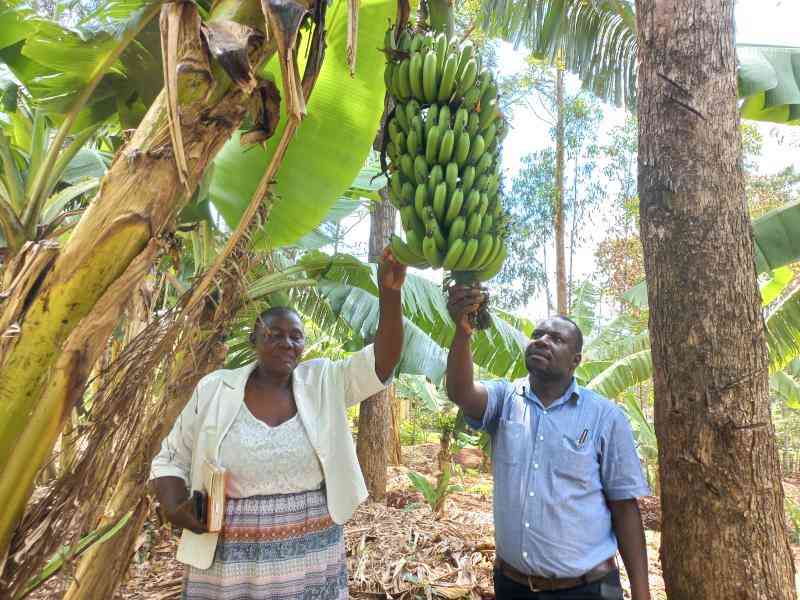World over, the New Year is often viewed as an opportunity for a fresh start. We make commitments to break old habits and resolutions to hit certain targets. This is no different for farmers too.
This is a great time for goal setting and putting into action a strategy to achieve milestones in your farming business. As we think about recent shifts in the farm economy, the New Year presents a good time to evaluate five areas that may need an overhaul in your farming business in 2016.
Resolution 1: Understand your costs
The old adage, “You can’t control what you don’t measure” is true. Knowing your costs, good or bad, is the first step to managing them. As we move into a time when prices and costs have squeezed a nice profit margin into little or no profit, knowing your costs may be difficult, but that doesn’t make them less important.
Agriculture is one of the few industries where it is common to produce a product without comprehensive cost projections.
Perhaps it is because farming is often viewed more as a lifestyle rather than a business. Maybe it is the way you were taught by your parents and grandparents who ran the business successfully for many years. Or maybe it is just because the ability to set a price above cost of production rarely exists.
Nevertheless, it is dangerous to keep doing what you’ve always done without an idea of what profit you will get. Waiting until the end of the year to see how much money is left over, it will be too late.
Start with accurate books. Most farmers hate the task of bookkeeping – they just cannot stand to waste daylight on accounting. If you can’t or won’t do it, get someone to help you. Most accounting firms offer some help in keeping records.
An accurate set of books is one that is reconciled to the bank statements (including loan statements) and accounts for all transactions. Keep track of quantities sold so that you can match production and prior inventories.
Taking book work one step further may involve breaking down major expenses by enterprise. For instance, splitting the seed bill among corn, soybeans and wheat (or whatever crops you have).
Try to do this with the major expenses: seed, fertiliser, chemicals and crop insurance. These expenses make up the largest group of expenses and will make the most impact. Items such as cash rent or utilities also can be split per acre.
However, these per-acre costs rarely differ among crops, so do not waste a lot of time splitting utilities monthly. Level of detail tends to make most farmers burn out and give up on splitting out any expenses. For those expenses that need to be split evenly over all acres, just make a one-time annual allocation for those expenses.
Resolution 2: Control family living costs
Over the years, out of pocket family living costs for the farmers we work with have been increasing. As profitability declines, many operations will need to pull back on family living costs. It is important that you consider your income potential and make sure your family living costs fit under that. A farm with Sh100,000 of family living costs and Sh80,000 of income is in more trouble than a farm that spends Sh150,000 but makes Sh200,000.
Like farm costs, we probably won’t find the cuts in a single category, but rather it will be important to trim as many costs as possible from as many categories. It’s hard to imagine a Sh50 coffee a day makes much of an impact, but that it adds up to Sh18,000 a year.
Stay informed. Subscribe to our newsletter
If you can find 10 things like that to cut, it will be Sh180,000 and that starts to make a significant impact.
If you need help with a non-farm budget, there are a lot of personal finance aids. You will find information on how to establish a budget and how to stick to it. One of the simplest ways may be to put yourself “on a salary.” When your personal expenses have easy access to a large operating note, it becomes easy to overspend.
Try setting up a separate account and transfer a predetermined amount from the farm account to the personal account each month.
It will be as if you are a wage earner and it will be easier to keep yourself from spending more than you are making. You can even get smart phone apps that allow multiple family members to update a budget as they spend money. This accountability will keep you following through with your plan.
Regardless of how you set up your budget, you need to make sure your family understands why you are setting the budget and backs the effort.
Resolution 3: Evaluate your debt load
Debt is not necessarily a bad thing and is certainly a helpful way to grow and manage a farm business, but the more debt you carry, the more risk you carry. As income drops, the ability to repay drops. If you believe we are in a long-term down cycle, it is important to get debt under control.
A high debt load going into a downturn means the operation has less flexibility to take advantage of opportunities that may present themselves in 2016.
Resolution 4: Select inputs carefully
The total cost to produce an acre of corn is comprised of four categories (seed, fertiliser, chemicals and crop insurance). These inputs are obviously important to the bottom line of net return.
Re-evaluating which inputs to buy and how many additives to include will be imperative this year. Carefully weigh the cost of the input versus the expected return. You’ll need to re-evaluate the production practices you put in place over the past three to five years and make sure they still make sense.
Also consider shopping around for inputs. While loyalty and trust are important in any business relationship, it’s also important that you get the best price for your inputs. Shopping around and keeping your suppliers competitive will help reduce your costs without hurting yield potential.
Resolution 5: Watch lease agreements
Landlords want to increase rent because taxes are increasing. Tenants want to decrease the cost because commodity prices have decreased.
There is no right answer in this battle, but the reality is that the free market doesn’t seem ready to fully back off. You may push the pencil and find that Sh10,000 is the most you can pay per acre, while plenty of producers out there are willing to pay more.
Maybe their costs are lower than yours. Maybe the cycle will turn yet again and their bet will pay off.
Regardless, this decision is strictly a personal decision.
Your ability to pay may be affected by several things: the number of acres involved, the length of the lease and the financial health of your farm business.
Remember, the world needs to eat
To conclude, we don’t know how long we will be seeing tight margins. Production agriculture is a cyclical business where tough years seem to be more common than good ones.
In reality, the world needs to eat, so eventually the supply and demand functions will have to work so that someone will make money growing food. It may easily be tight enough that you have be an above average producer to be competitive.
Those producers who are prepared to balance the tight rope of controlling all costs through these upcoming tough years and are prepared to take advantage of opportunities to make money when they present themselves are the one who will be in business in 2016.
How do you do that? It all comes back to Resolution #1: know your costs.
Then you’ll be prepared to make quick, yet accurate decisions based on real information.
Happy New Year and best of luck keeping your resolutions!
The writer is an expert on sustainable agriculture and agricultural innovations. [email protected]
 The Standard Group Plc is a
multi-media organization with investments in media platforms spanning newspaper
print operations, television, radio broadcasting, digital and online services. The
Standard Group is recognized as a leading multi-media house in Kenya with a key
influence in matters of national and international interest.
The Standard Group Plc is a
multi-media organization with investments in media platforms spanning newspaper
print operations, television, radio broadcasting, digital and online services. The
Standard Group is recognized as a leading multi-media house in Kenya with a key
influence in matters of national and international interest.
 The Standard Group Plc is a
multi-media organization with investments in media platforms spanning newspaper
print operations, television, radio broadcasting, digital and online services. The
Standard Group is recognized as a leading multi-media house in Kenya with a key
influence in matters of national and international interest.
The Standard Group Plc is a
multi-media organization with investments in media platforms spanning newspaper
print operations, television, radio broadcasting, digital and online services. The
Standard Group is recognized as a leading multi-media house in Kenya with a key
influence in matters of national and international interest.









